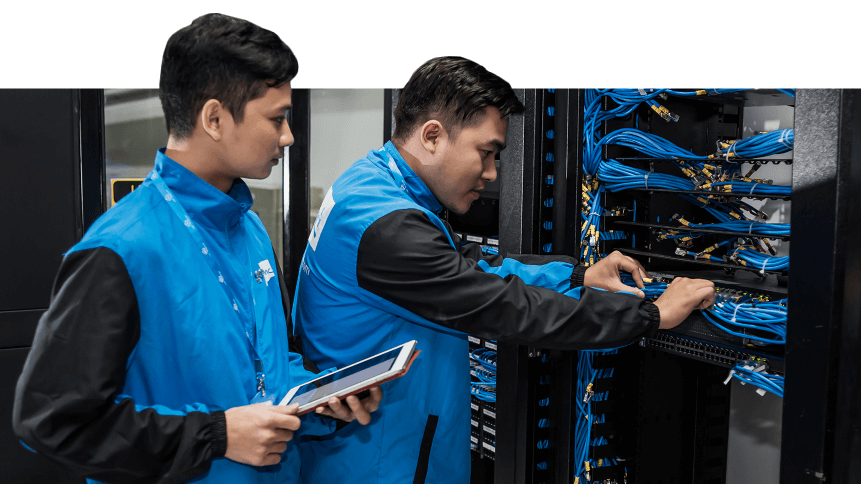Why the world of IT is demanding the green data center

Becoming a ‘green’ company is becoming less of a nice-to-have, conscientious decision, to one that could differentiate your organization against competitors as a ‘forward-thinking’ brand.
The fact is, the environmental impact of our energy consumption and carbon footprint has never been a more prominent discussion.
Consumers are flocking to green products and companies, and are willing to pay more for that assurance.
Showing your business is conscious and present in that discourse can set it out as a leader of social change with a finger on the pulse, and that can benefit both customer perception and that among the thinkers your company wants to attract to the hiring table.
Advantages of ‘green thinking’ also extend to efficiency gains and reductions in unnecessary waste– as well as potential tax cuts and legal incentives. So, while the environmental benefits might polarize opinions, a positive impact on the bottom line probably won’t.
Green data centers
While Cycle to Work schemes, not leaving lights or aircon running needlessly, cutting plastic and recycling might be a start, our increasing movement towards cloud and internet services is resulting in the ugly byproduct of massive energy consumption by data centers.
According to researcher Andres Andrae, by 2025, data centers will account for an entire third (33 percent) of the IT sector’s electricity production. That’s compared to smartphones (15 percent) networks (10 percent) and TV (9 percent). In their current form, data centers would use 20 percent of the world’s energy in five years time, contributing to 5.5 percent of the world’s carbon.
According to TCO Certified, a sustainability certification company, carbon dioxide emissions by data centers are now akin to those of global air travel.
The entire “data universe” is expected to reach 44 zetabytes by 2020. In the next few years, technological advancements facilitated by 5G connectivity will see a further explosion in the data produced, processed, shared and stored by organizations.
It’s figures like these that are leading to the growing adoption of sustainable or green data centers when it comes to businesses selecting a data center provider or managed service to work with.
Green data centers aim to decrease the power consumed round the clock by server networks’– by fans, consoles, monitors, lights and cooling systems– minimizing environmental impact while maintaining systems’ performance and efficiency.
Report Consultant’s Global Green Data Center Market report predicts that, as the demand for data storage continues to rise rapidly in the next decade across all industries, the green data center market is set to grow from US$37.9 billion in 2019 to US$198 billion by 2027.
YOU MIGHT LIKE

Is it time all e-retailers offered ‘green delivery’?
According to Data Center Dynamics, there are four key ways in which data centers are becoming more energy efficient.
# 1 | New equipment
Firstly, it relies on stripping out old, less energy-wise hardware– which degrades and consumes more power over time– in place of new, more energy efficient equipment which is more capable.
# 2 | Virtualized control
Secondly, virtualization allows IT teams to control equipment remotely, requiring fewer people on site and the facilities to accommodate them. This means lower energy consumption overall, while temperatures can be allowed to run higher without the need for cooling.
Google, Facebook, Microsoft, Intel and Oracle have reportedly claimed “substantial” energy consumption reductions as a result of operating data centers at higher temperatures.
# 3 | Turning off ‘dead servers’
Data centers and managed service providers tends to provide spill-over storage space, which is allocated automatically when required. While this provides leeway for growth, it also means server space is left idle when not in use, drawing power without any work.
Combined, this surplus storage can account for a quarter of data center space. Green data centers turn off dead servers, ensuring power is only consumed by active, functional equipment. The power savings benefit customers with lower fees.
# 4 | Power on demand
In a similar vein, green data centers won’t work off power consumption estimates, but will continually monitor and analyze their usage to supply only the power they require. This also cuts costs, while tools are also available to reroute unused power to other areas of a facility.
A greener future for data
As organizations produce and handle ever-greater volumes of data, they will seek more cost effective options for storage, as well as increased pressure to act sustainably across all areas of their business.
Green data centers will provide a solution to both those needs, while helping to limit the impact of new innovations on the environment.









